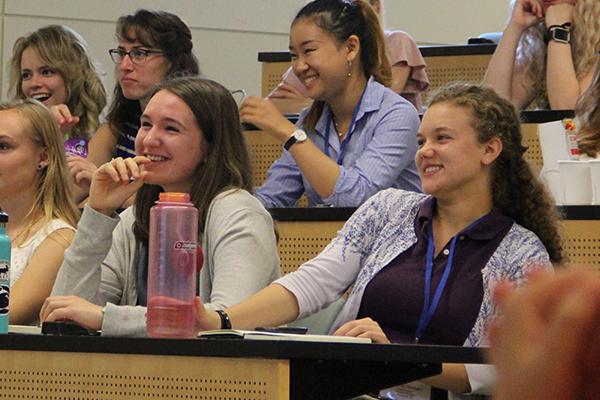
The Mathematical Biosciences Institute (MBI) is hosting a multi-institution REU program in the mathematical biosciences, facilitated by the Mathematical Biosciences Institute (MBI) located on the campus of The Ohio State University. The objectives of the program are: (1) to introduce a diverse cohort of undergraduate students to the mathematical biosciences, broadly interpreted to include areas such as biostatistics, bioinformatics, and computational biology, in addition to biologically-inspired mathematical modeling; (2) to encourage students to pursue graduate study in the mathematical biosciences; and (3) to increase the number of students who enter the workforce with training in this field.
REU participants work on projects in areas such as molecular evolution, neuronal oscillatory patterning, cancer genetics, epidemics and vaccination strategies, and animal movement. Participants work individually or in pairs under the guidance of expert mentors to make specific research contributions in these areas, often leading to a peer-reviewed publication and conference presentations. The REU program incorporates various professional and research-skills development activities throughout the summer to help ensure the participants’ success in completing their summer project and to prepare them for graduate study or entering the workforce.
The program consists of three parts:
- Introduction to Mathematical Biosciences (June 11th-15th, 2018) at MBI
Participants are introduced to various areas of the mathematical biosciences via lectures, computer labs, and visits to various biological labs on campus.
- Mentored Research Experience (June 18th-August 3rd, 2018) at IUPUI, NJIT, or PSU
Participants complete a mentored research project individually or in pairs at one of the REU Program host sites. Participants also attend a weekly online seminar series and virtual all-program meeting.
- Capstone Conference (August 6th-9th, 2018) at MBI
Participants return to MBI to participate in the Capstone Conference: a student-centered conference featuring talks and posters by students doing research in the mathematical biosciences, keynote talks by prominent mathematical biologists, a graduate studies recruitment fair, and other special features including a conference dinner and social event. Note that the Capstone Conference is open to all undergraduate students doing research in the mathematical biosciences, not only to students participating in the MBI REU.
